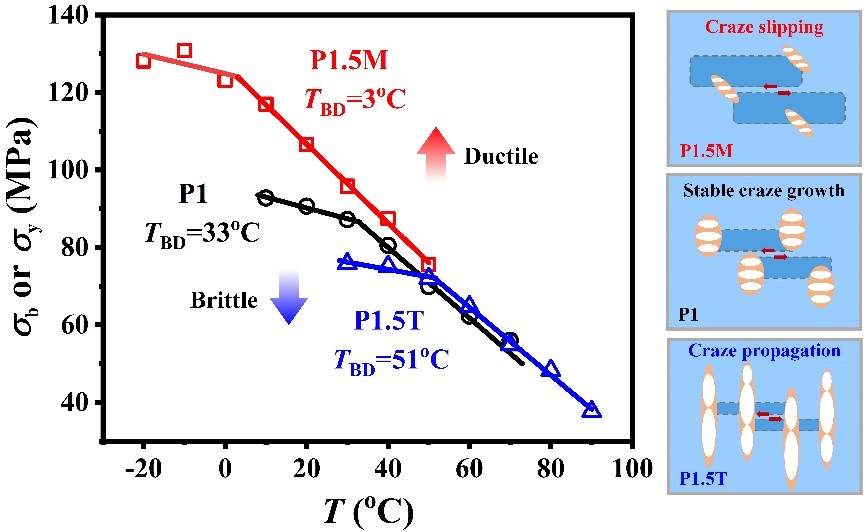With the guidance of Prof. Li and Prof. Meng, the work titled “Understanding the brittle-ductile transition of glass polymer on mesoscopic scale by in-situ small angle X-ray scattering”studied by Qi Yan et al. has been published in “Polymer” recently.

The structural evolution of poly (methyl methacrylate) (PMMA) under uniaxial stretching has been studied with in-situ synchrotron radiation small angle X-ray scattering (SAXS) to reveal the brittle-ductile transition (BDT) mechanism.Melt pre-stretching changes the critical interfacial energy for the initiation of craze or shear bands, and the stabilization effect of shear banding on crazing is essential to achieving a stable plastic deformation. For samples with melt pre-stretching, crazing is further promoted when stretching along the transverse direction. The destructive crazing cannot be fully stabilized by shear banding and premature craze fracture occurs. In contrast, shear banding dominates the deformation when stretching along the pre-stretching direction. The premature craze damage is consequently avoided and an enhanced toughness is achieved. The structural evolution of these samples indicates that the kinetic competition between crazing and shear banding is the key to the macroscopic toughness of glass polymers.
This work is supported by the National Natural Science Foundation of China (51890872, 51633009) and National Key Research and Development Program of China (2018YFB0704200).
Related links: https://www.sciencedirect.com/science/article/pii/S0032386120308107


